James Rogers works in the world of the Australian visual effects for over 15 years. After a journey by Square USA, where he worked on FINAL FANTASY, he then worked as VFX supervisor on ANIMATRIX: THE FINAL FLIGHT OF OSIRIS. He joined Postmodern in 2003 where he supervise the visual effects of many commercials and movies such as DAYBREAKERS, AUSTRALIA and KNOWING.
How did you get involved on this movie?
We were approached to do this movie some time ago. A commercials director we work closely with was developing a different film with the DAYBREAKERS producers. He introduced us, and we started talking. We had just finished DEATH DEFYING ACTS for director Gillian Armstrong, which was a lot of fairly complicated set extensions. Our initial involvement with DAYBREAKERS was to provide set extensions, so we were in a good position to get going. In the end it became a lot bigger than that.
 |
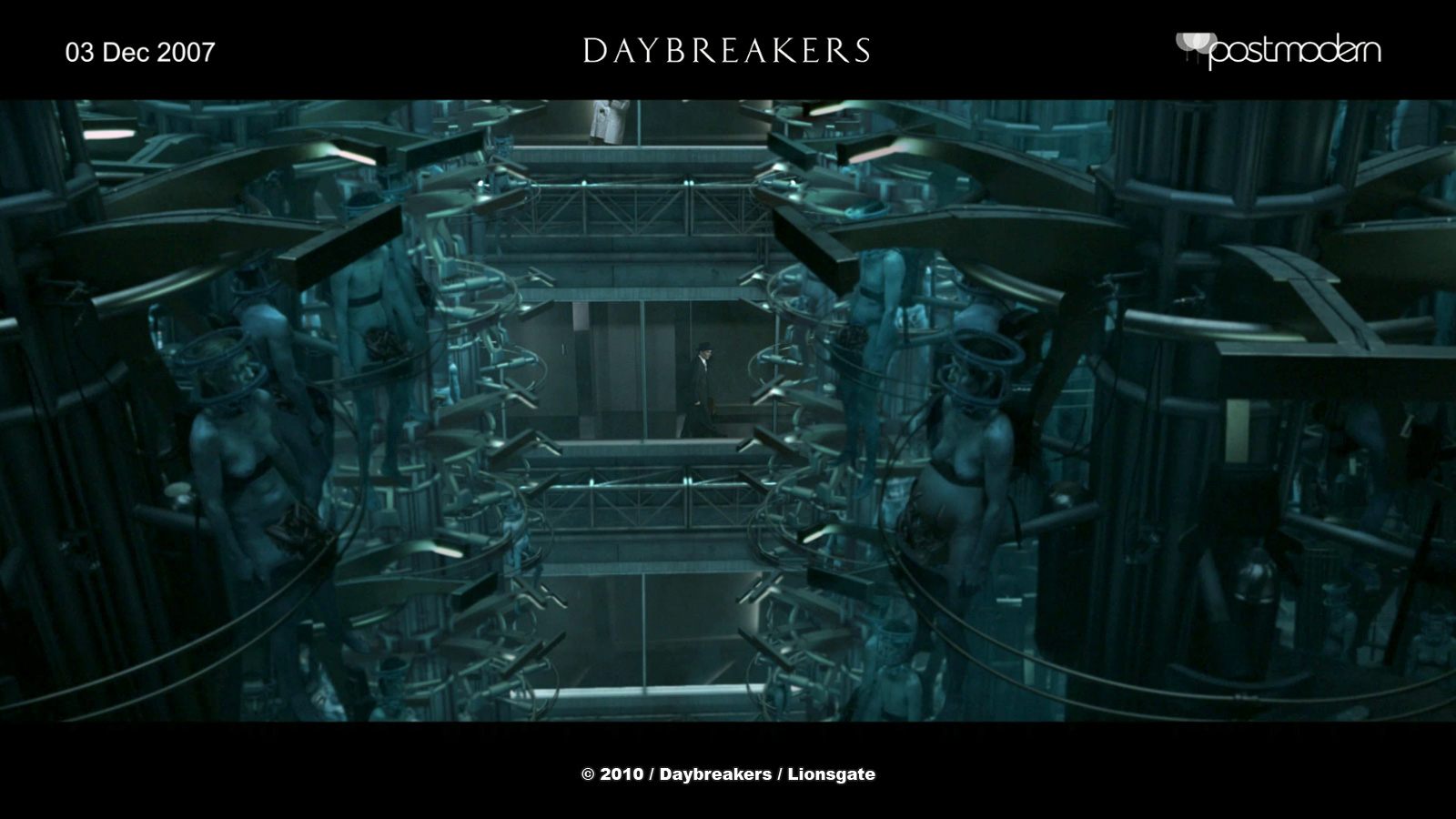 |
The visual effects are divided between Kanuka Studio, the directors and you. How did the effects distribution?
I think (and we finished this film in 2008, so forgive my poor memory), but I think we did about 350 shots. I think Kanuka did about 15, and the Speirig Brothers did all their wishlist shots themselves, which was no small list, something like 300 shots as well.
Why the directors wanted to make some visual effects themselves?
They had a lot of shots which didn’t fit into their budget, and they are pretty good VFX operators, so it made sense that they would do things which weren’t regarded as “primary” fx shots. I don’t think they would have it any other way.
How was your collaboration with the Spierig brothers?
It was great. They are very, very digitally saavy. They had already created 3D animatics for most of the film themselves. They knew exactly what they wanted—which is not to say they weren’t very collaborative—but we didn’t have to explain a lot of reasons why something couldn’t or should be done. Sometimes we experimented with things which failed initially, but they had patience, they could see through the rough versions, and understood where stuff was going. You don’t often experience that.
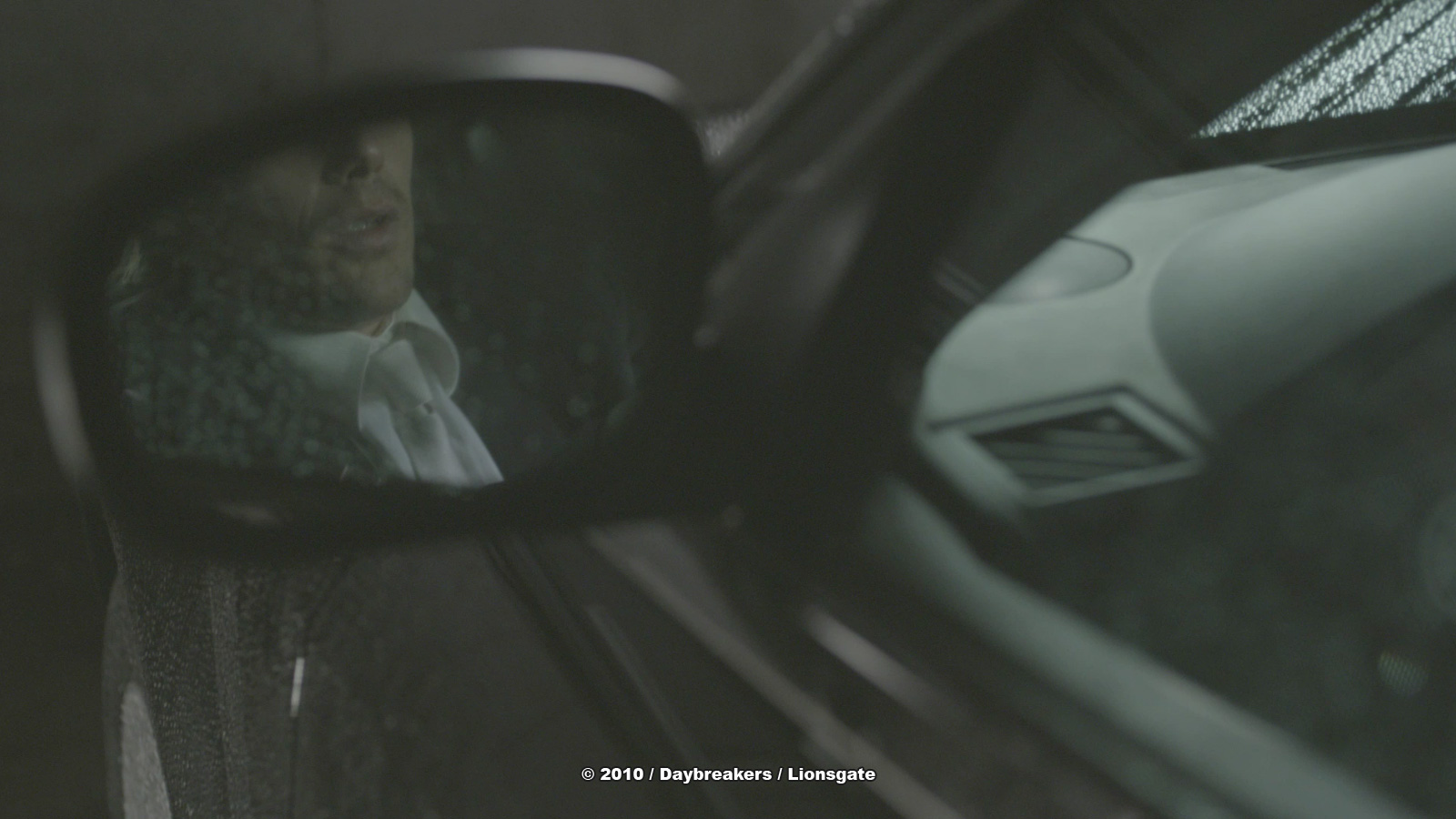 |
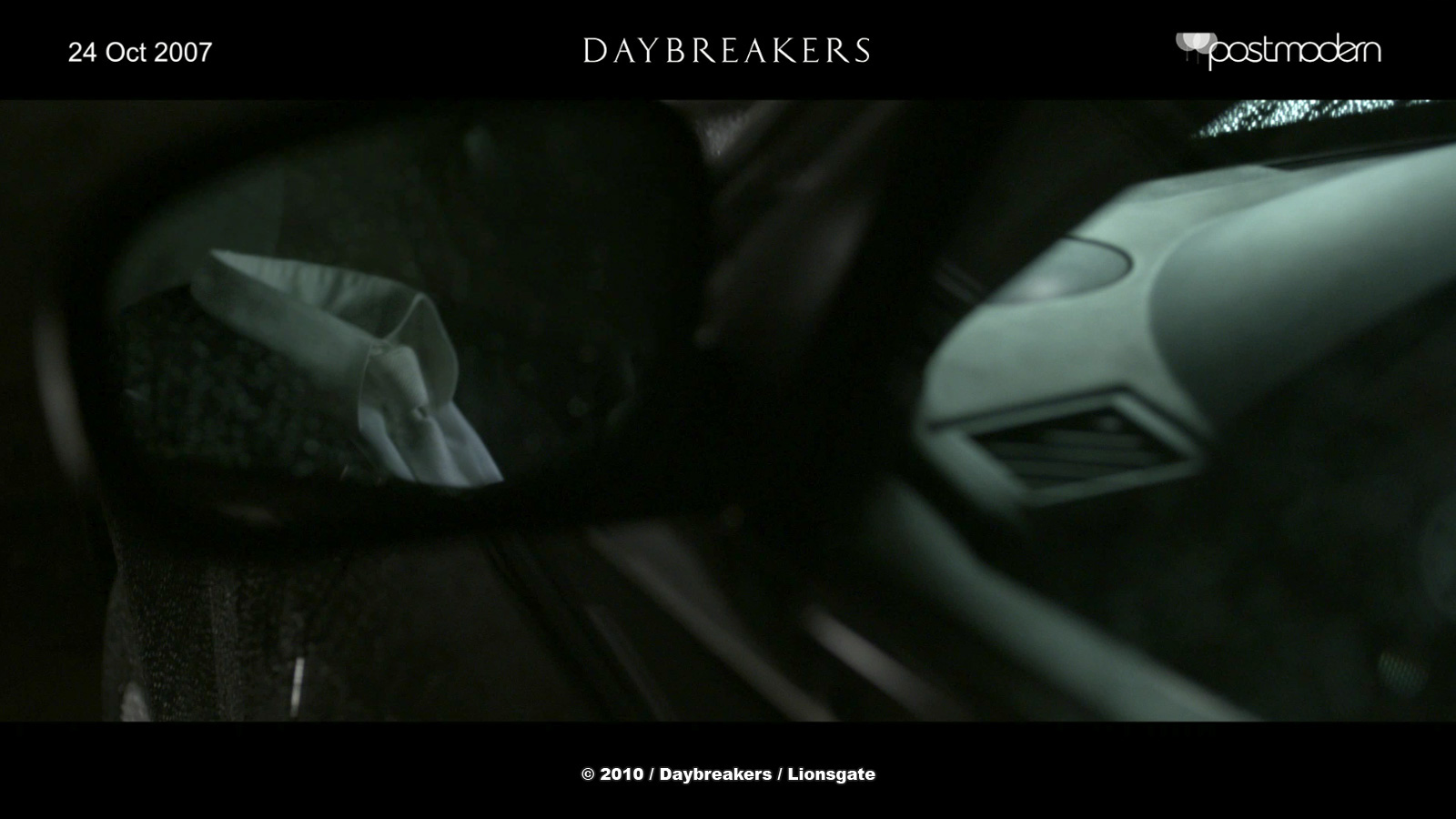 |
What are the sequences done at Postmodern?
We did a lot of stuff. We did almost all the modernisation and extensions of cities; we burnt Ethan Hawke (a lot); we created a digital subsider (deformed Vampire); car chase sequences; we did the blood farms shots; and we cut Sam Neill’s head off.
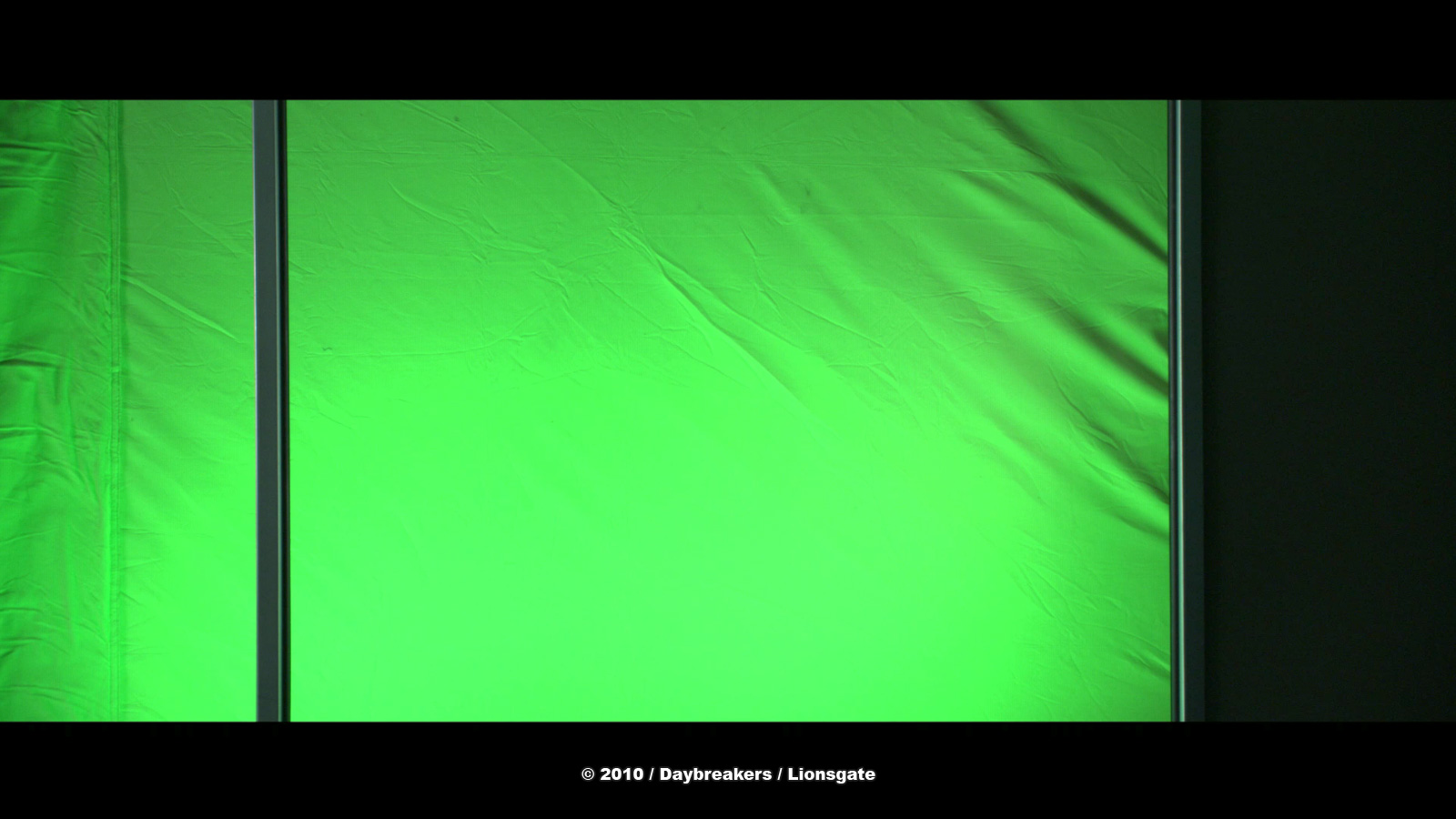 |
 |
What was the references given by the directors for the blood farm?
A lot of reference came from George Liddle, the production designer. The brothers had certainly given him some pretty clear direction, too. So we worked it up based on input from both George and the Brothers.
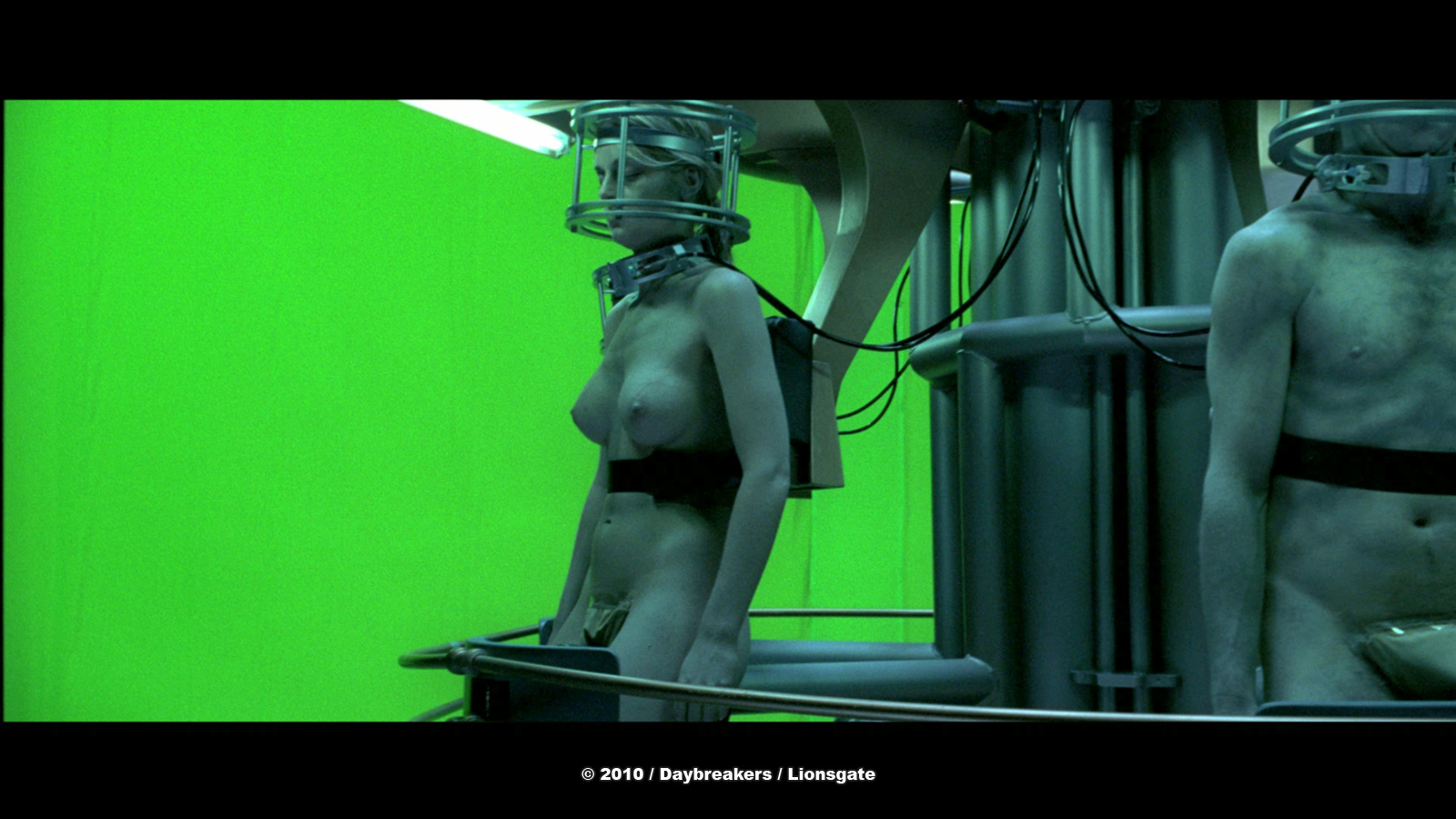 |
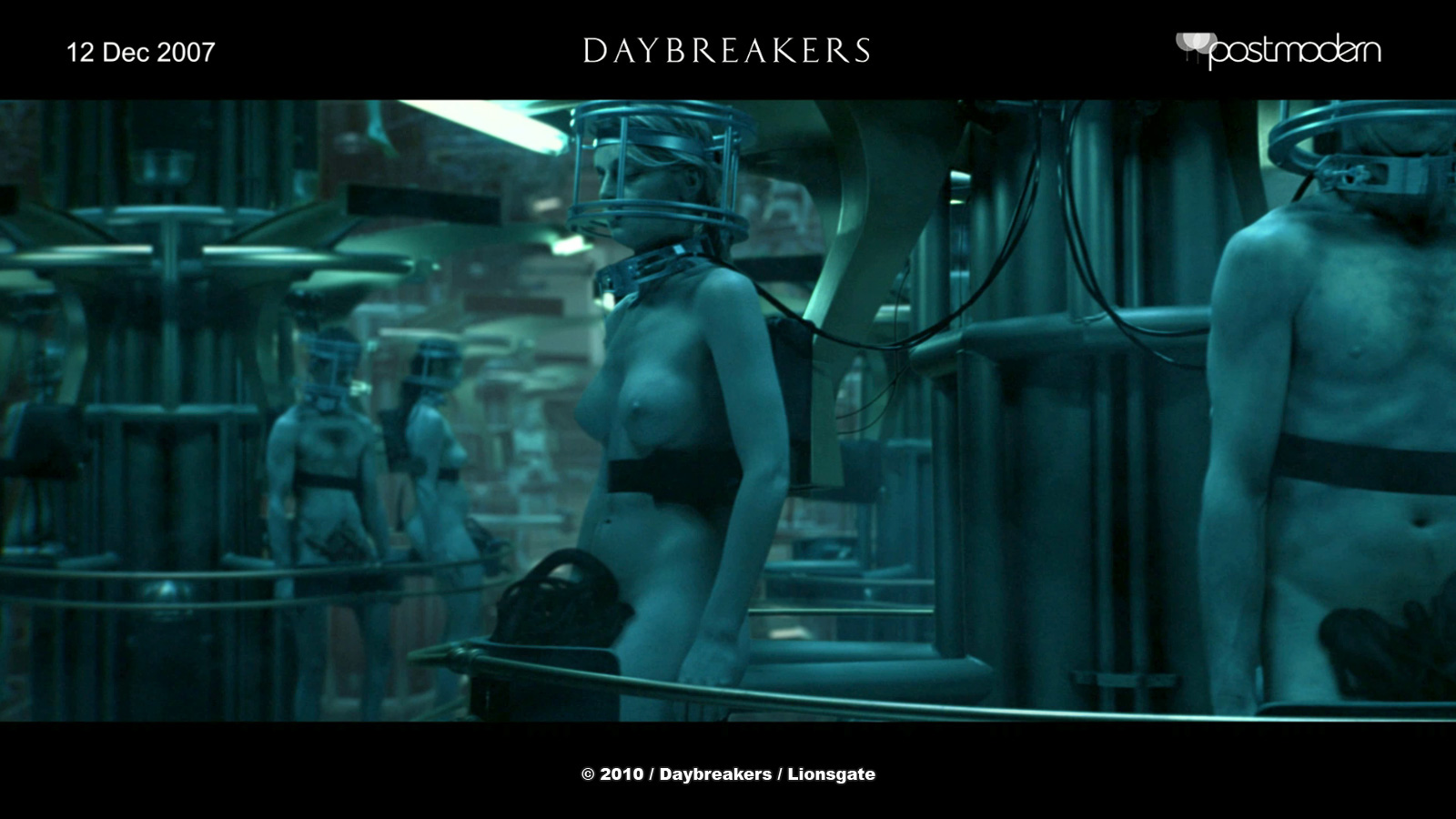 |
How did you have designed and achieved the blood farm?
Initially, to contain the budget, we were just going to duplicate a single live action element. In the end, we combined the live action element with a lot of matte painting and 3D people. Once we started going 3D, we started adding camera moves. It was a fairly organic process, but it was nice to be able to add something more to the shots the further we got into the production process.
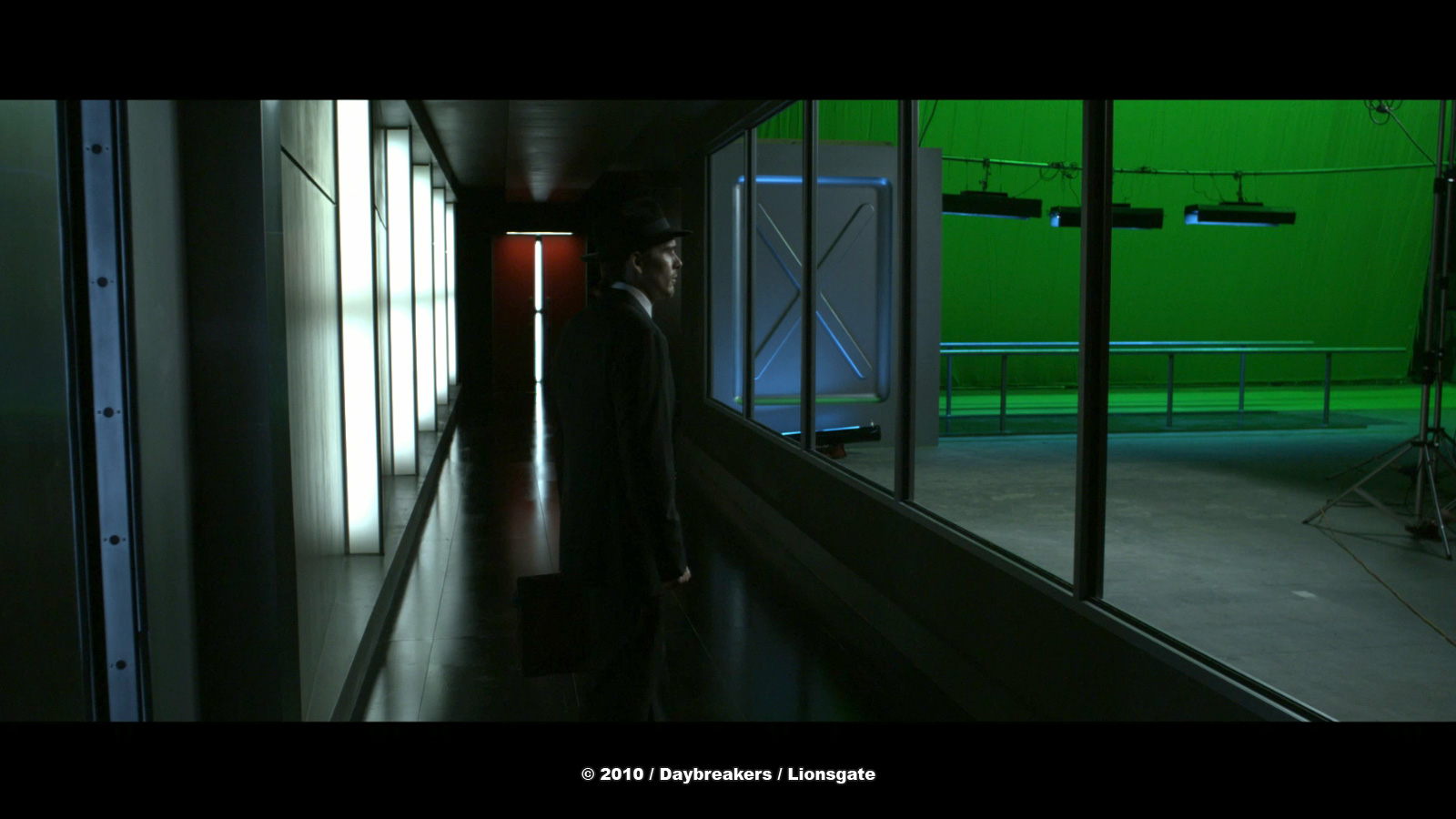 |
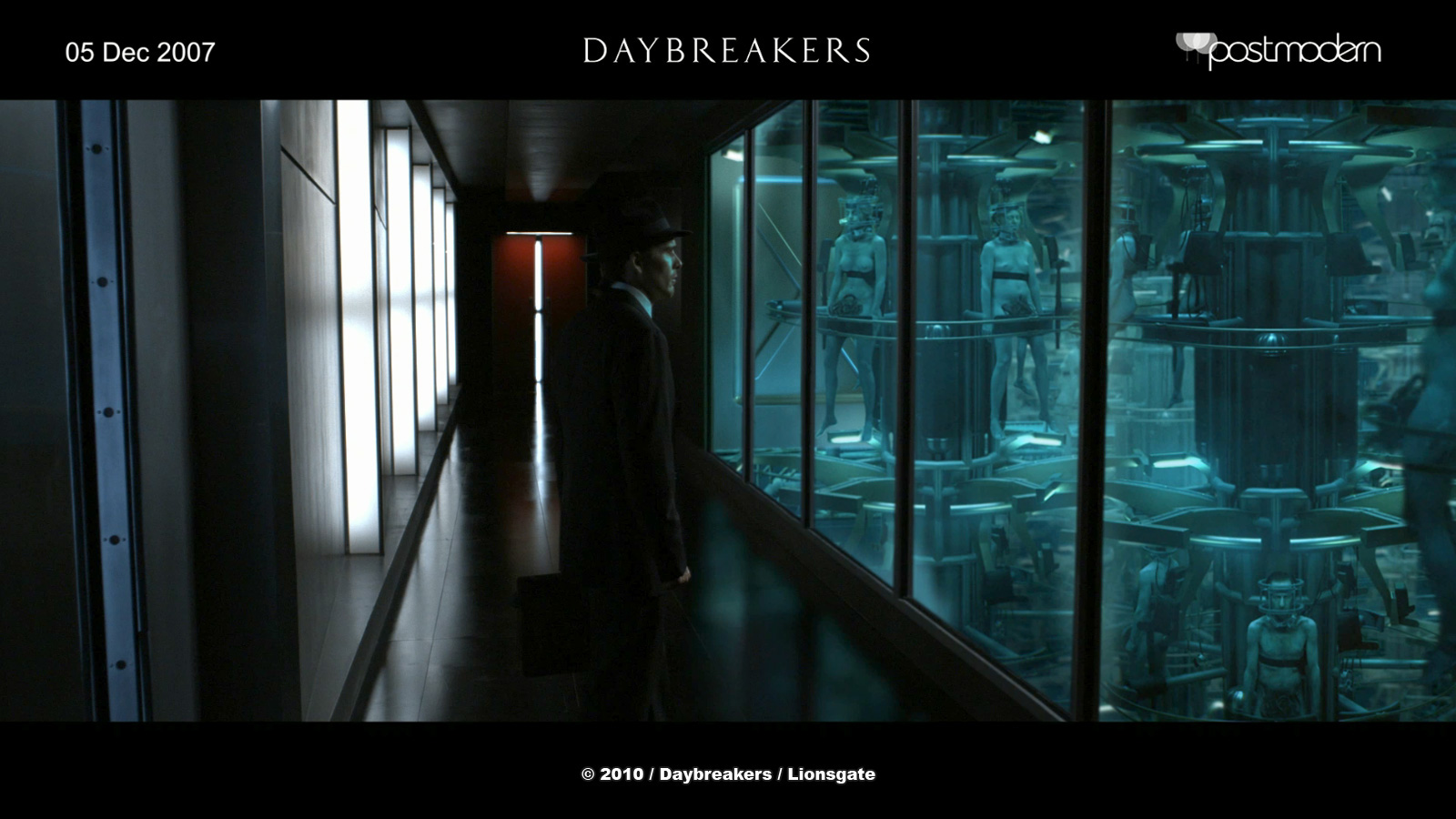 |
What indications did you have to create the futuristic city?
Again it was George who provided us with some great reference. There was a definite design, a language if you like, that they wanted to use in this film. So we followed that as closely as we could. We also had rules, such as how and when the vampires got around, how they had to retrofit their cities to be sun-proof, and so on. It was quite fun to create a universe where the vampires were the dominant species, and not one where they were the hunted.
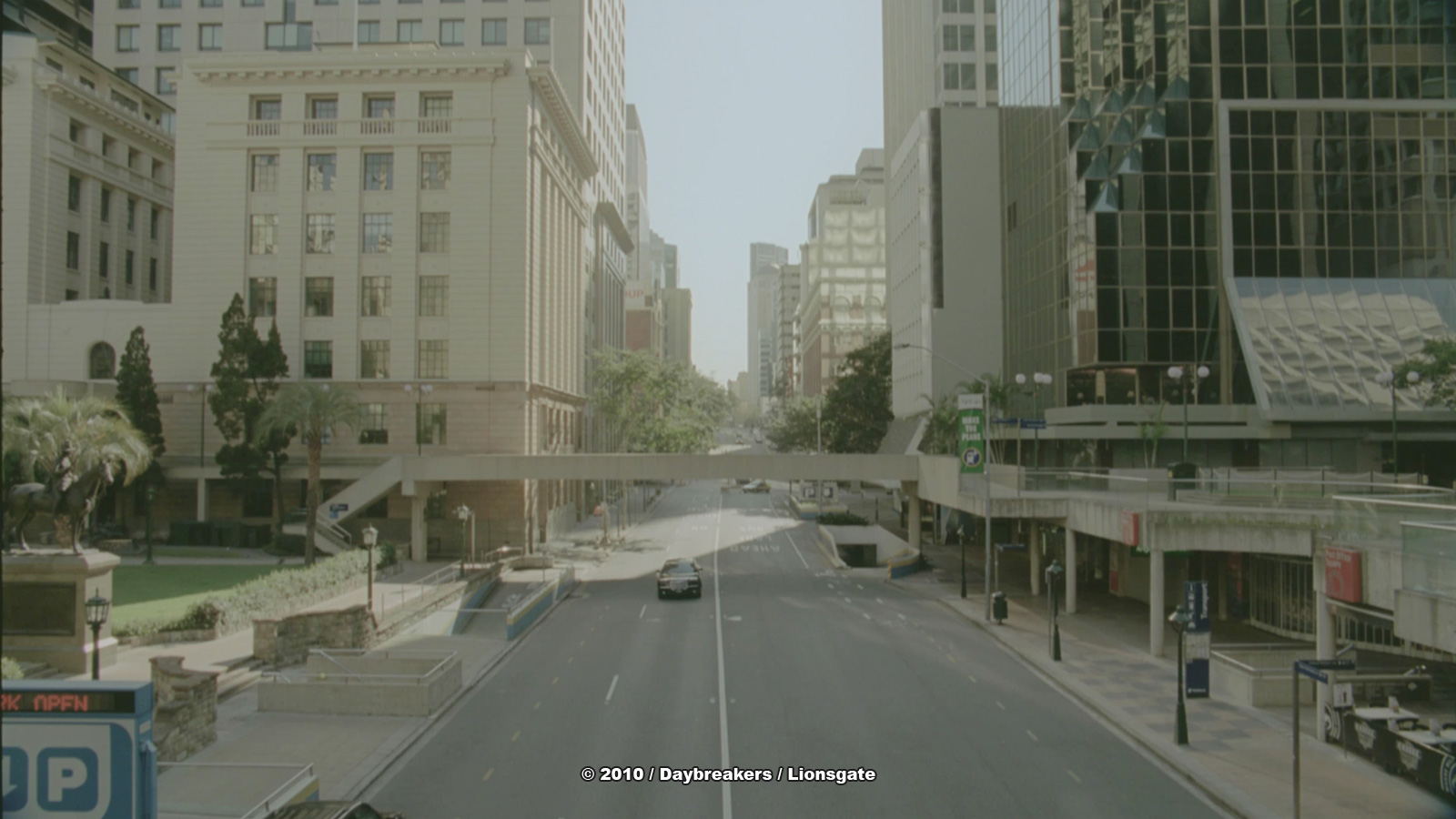 |
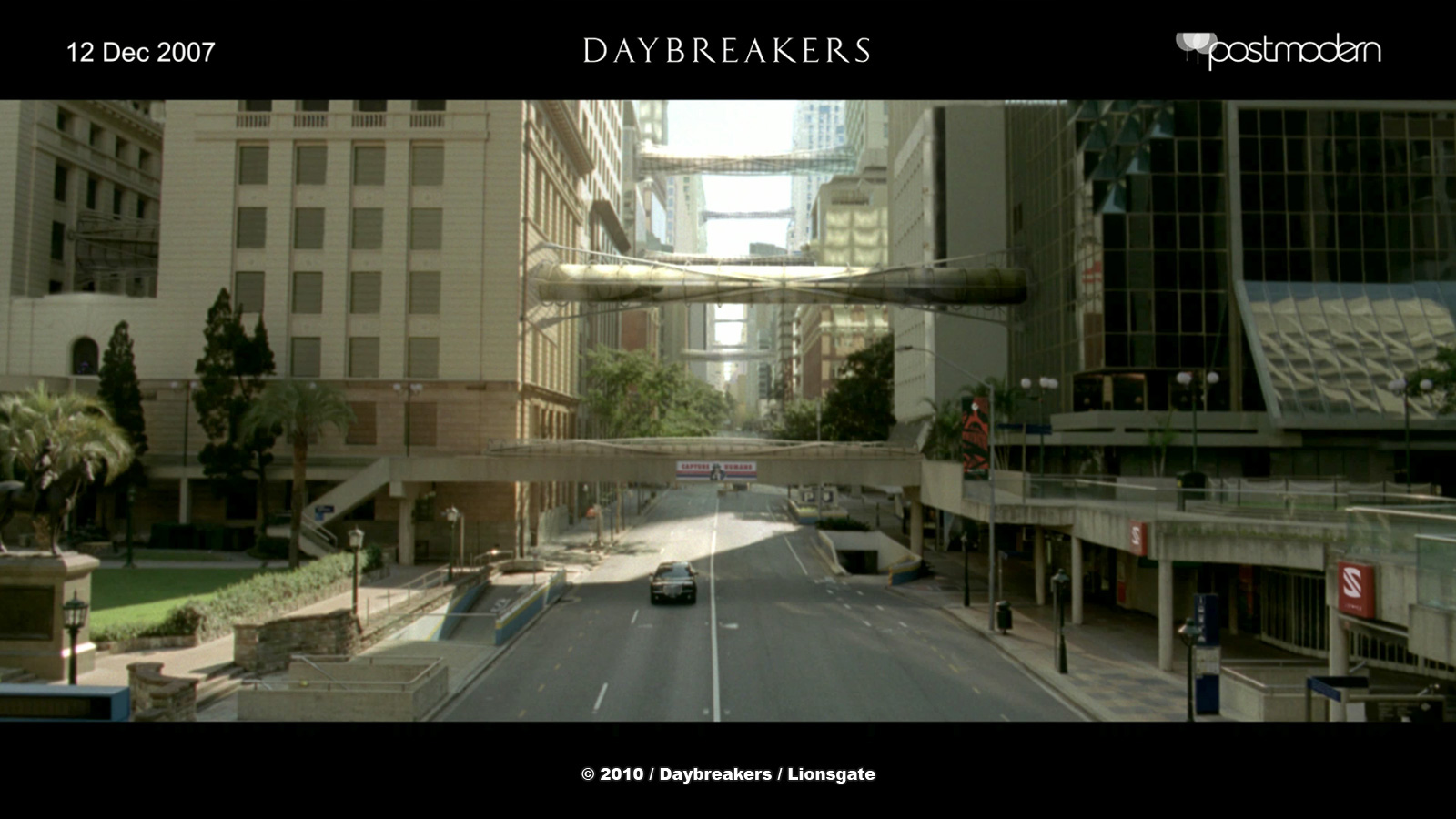 |
What have you done on the subsiders?
The subsiders were originally going to be a full body prosthetic. We were originally just going to add digital “wings” and claws for the attack sequence in Edward Dalton’s (Ethan Hawke) house, as well as some rig removal. There was an issue on set where the wire-harness under the prosthetics ended up making it look like the subsider had a diaper on… so in the course of working out a solution to that, we ended up replacing the subsider with a digital version. We had already been working on 3D skin ann sub-surface scattering techniques, so it was a logical evolution. The exciting thing for us is that it only took 2 weeks to get it to a position where it was almost done – a fully rigged characters, with muscle and veins systems. We were pretty pleased with that. Of course, this was a low-budget film, so we had to do it within our budget. Luckily it was a risk which paid off.
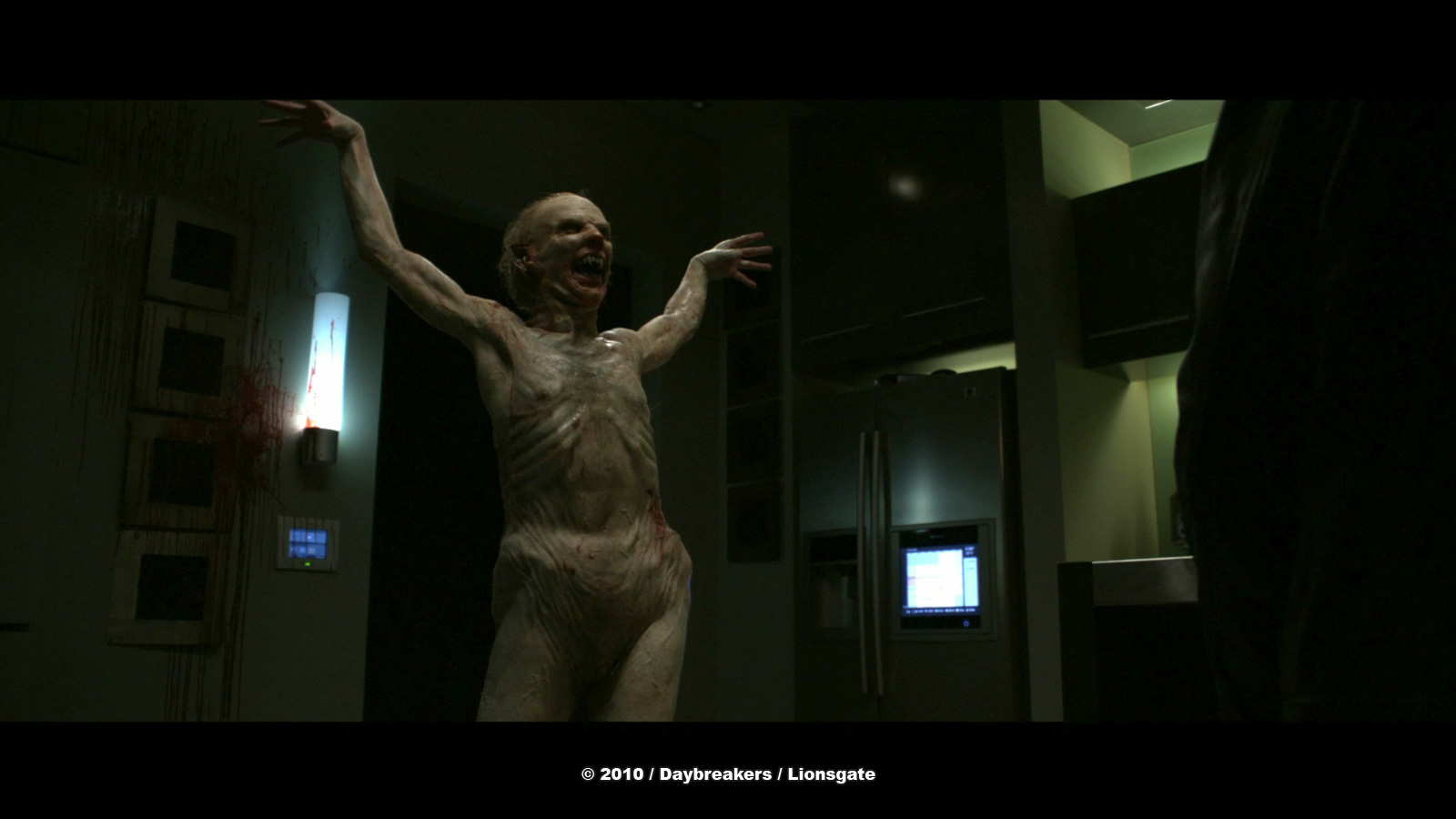 |
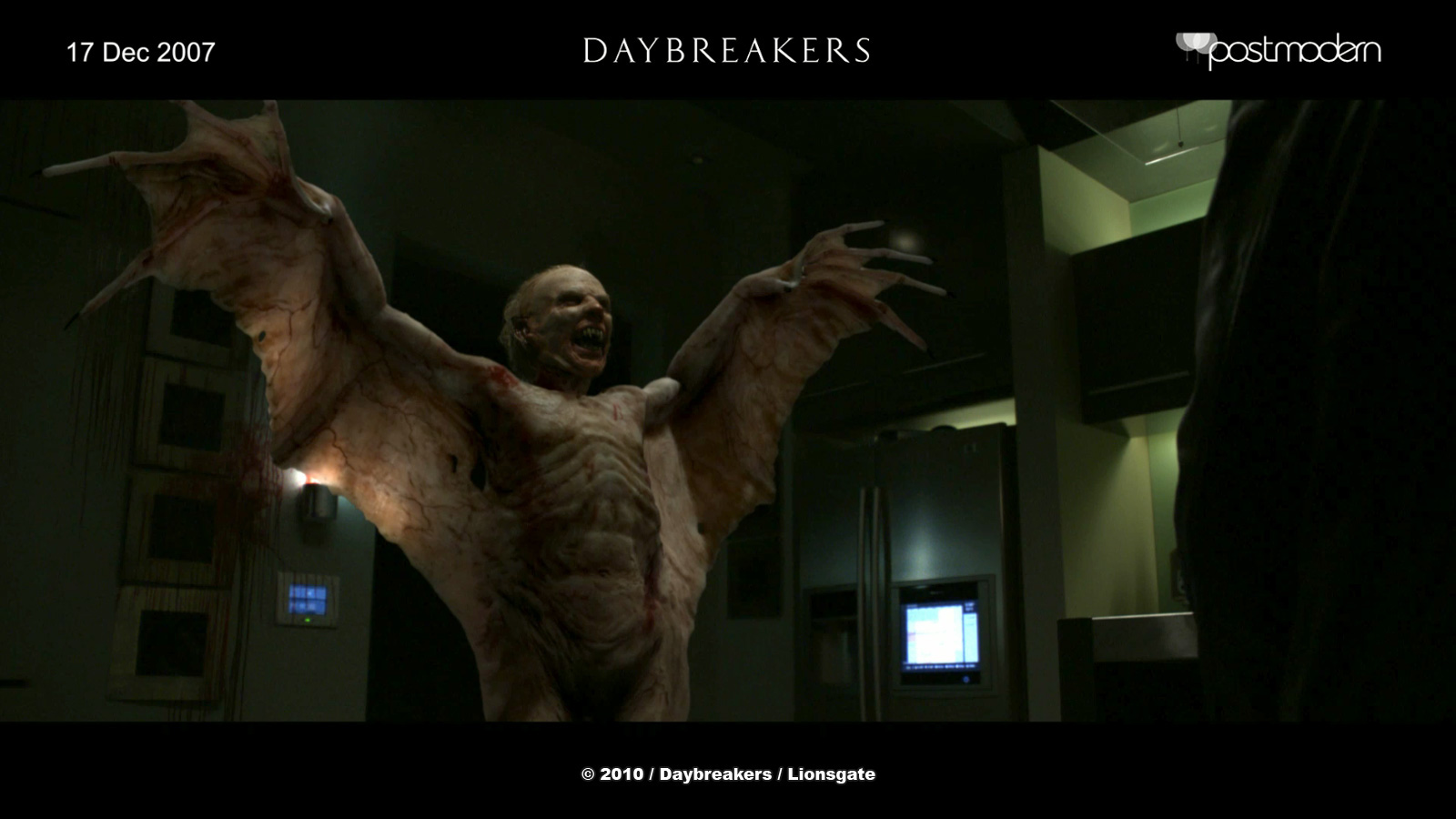 |
Can you explain to us how did you put fire on Ethan?
The fire was a combination of live action elements, which we shot using a model of a torso, painted black, and filled with gas pipes. We also shot other fire elements and then use a lot of manipulation in Flame to get them to stick to the plates of Ethan. Something which made a big difference was adding the heat haze; but the big difficulty was balancing the fire elements so that they would read well against the back plates. We deliberately avoided using CG flames for these shots, because I think sometimes you can get easily sidetracked trying to create something “real” when you can just as easily go and shoot it. Another nice thing about fire, is you can warp it and manipulate it quite extensively before it looks “wrong”. So a combination of approaches worked well for this, but finally it was rather lo-fi, when compared to other vampire films. However, it worked.
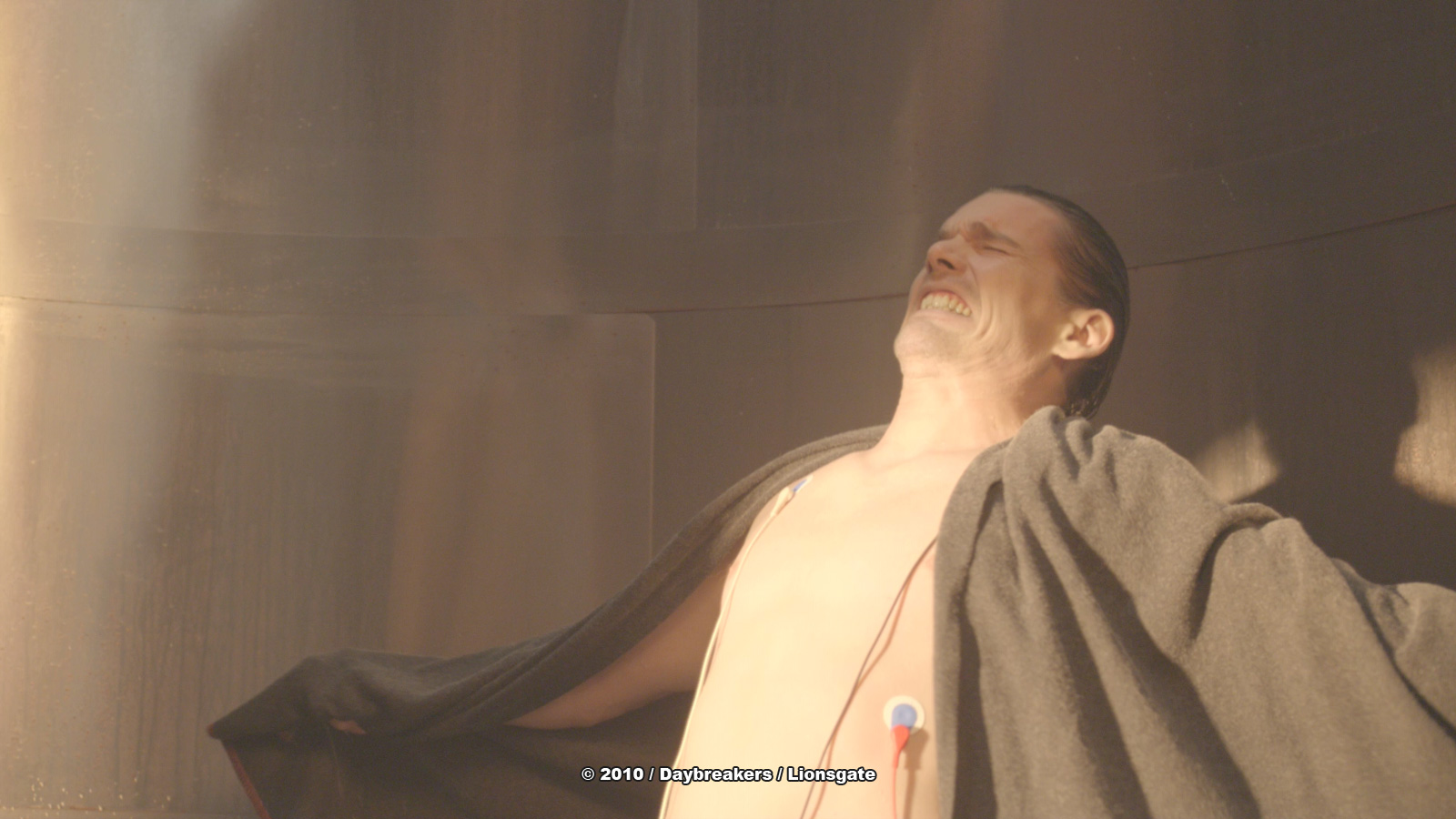 |
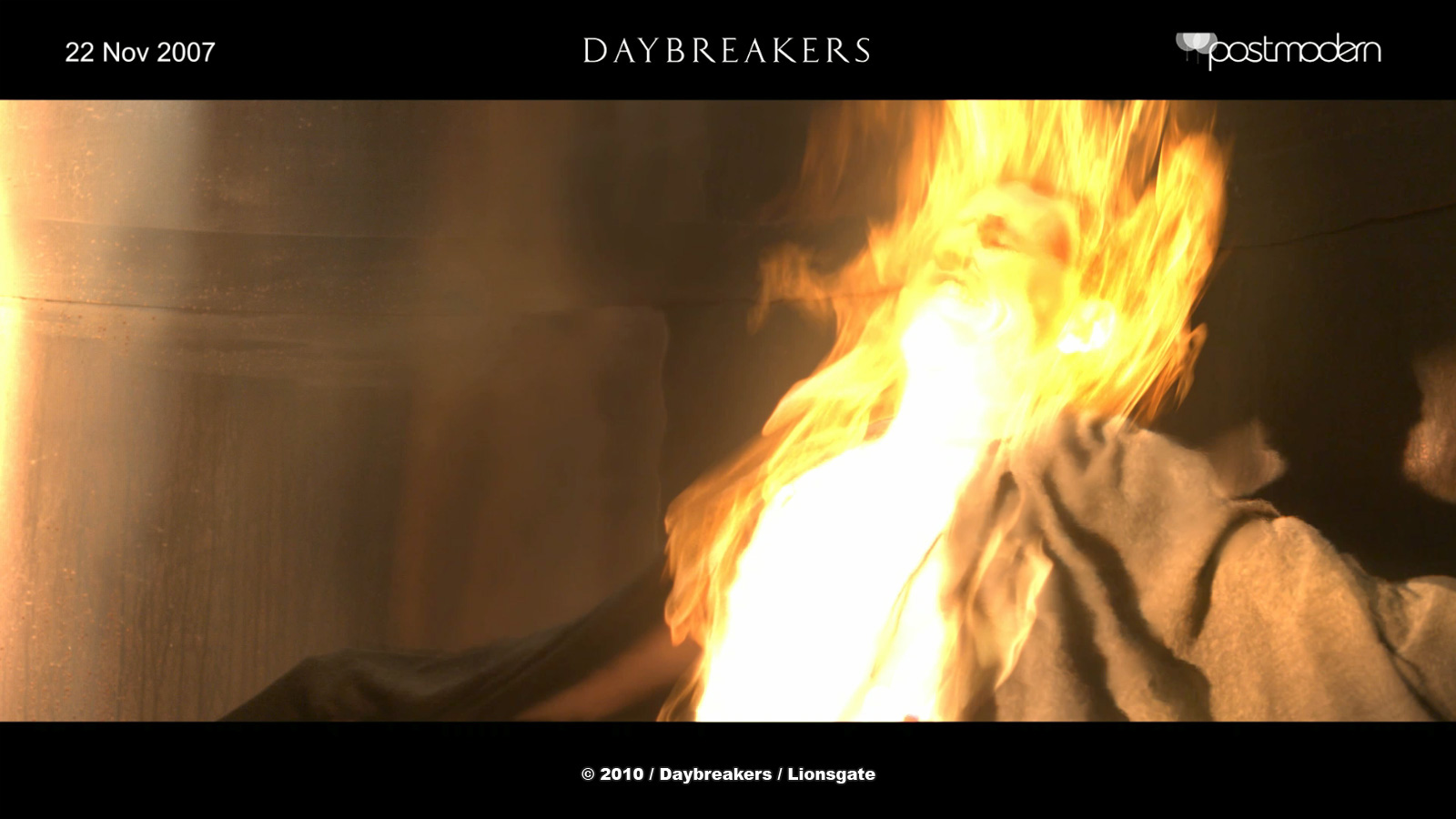 |
Can you explain to us how you proceed for the vampires explosions?
We shot a whole lot of explosion elements and buckets of blood and pig intestines. The vampires were warped in compositing and we stuck it all together. It was good fun.
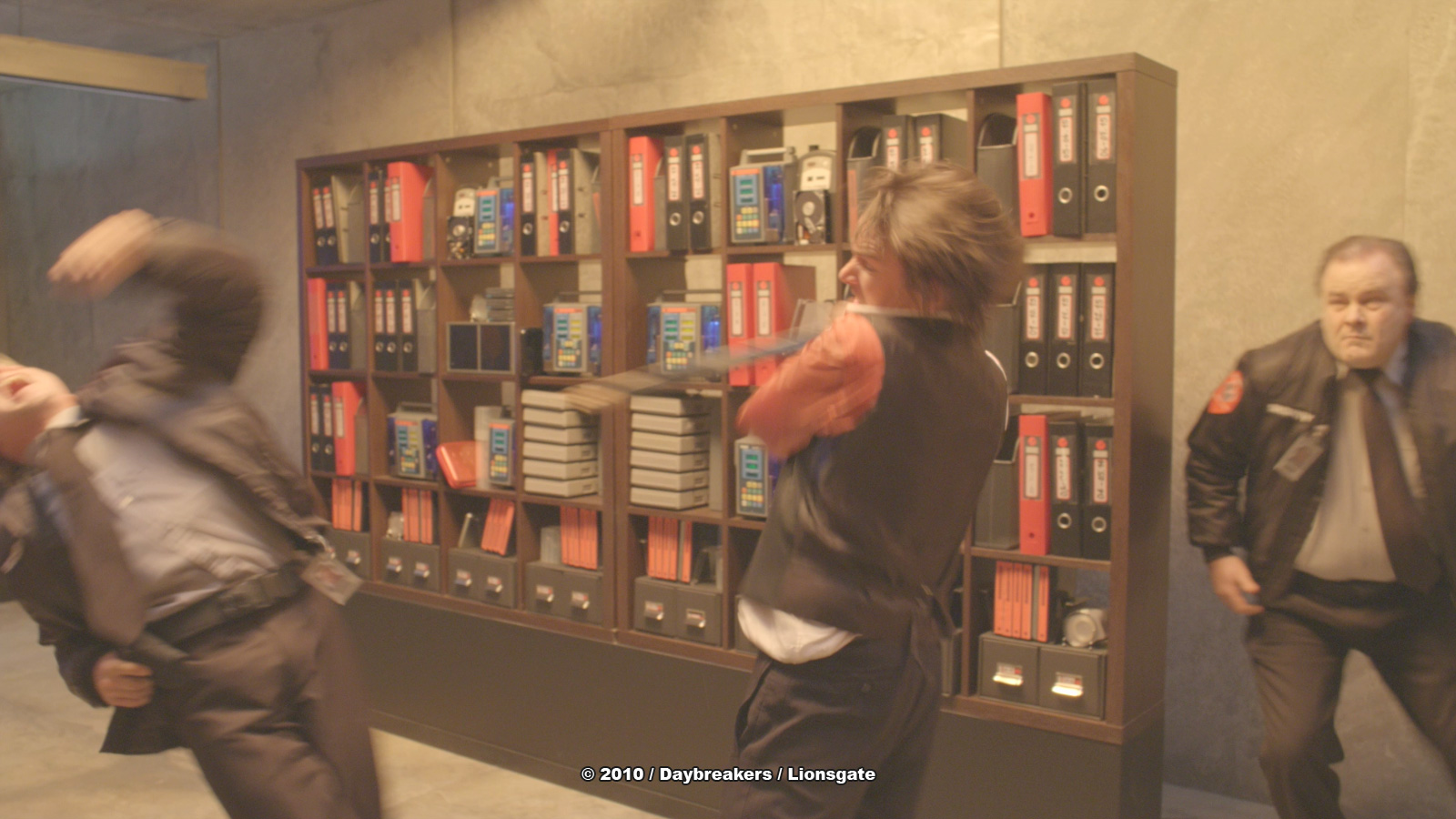 |
 |
Have you participated in the beautiful opening credits and if so, what did you do?
We designed the credit sequence and worked on matte paintings for the backgrounds. Ben Nott (cinematographer) shot some awesome stuff and the brothers did some great work there too. It came together well.
What is the shot that prevented you from sleeping?
All of them. In a production like this you tend not to sleep too much. I think the hardest sequence was the car chase where the 3 hummers (don’t) cross the bridge. There’s no good reason for it to be hard, it was just one of those things. It was difficult logistically to shoot, it was difficult to get right and make it work with what we had. But usually it is not the shots you think will be hardest in the beginning that cause you the most pain… it’s usually the simplest ones. As usual, the devil is in the details.
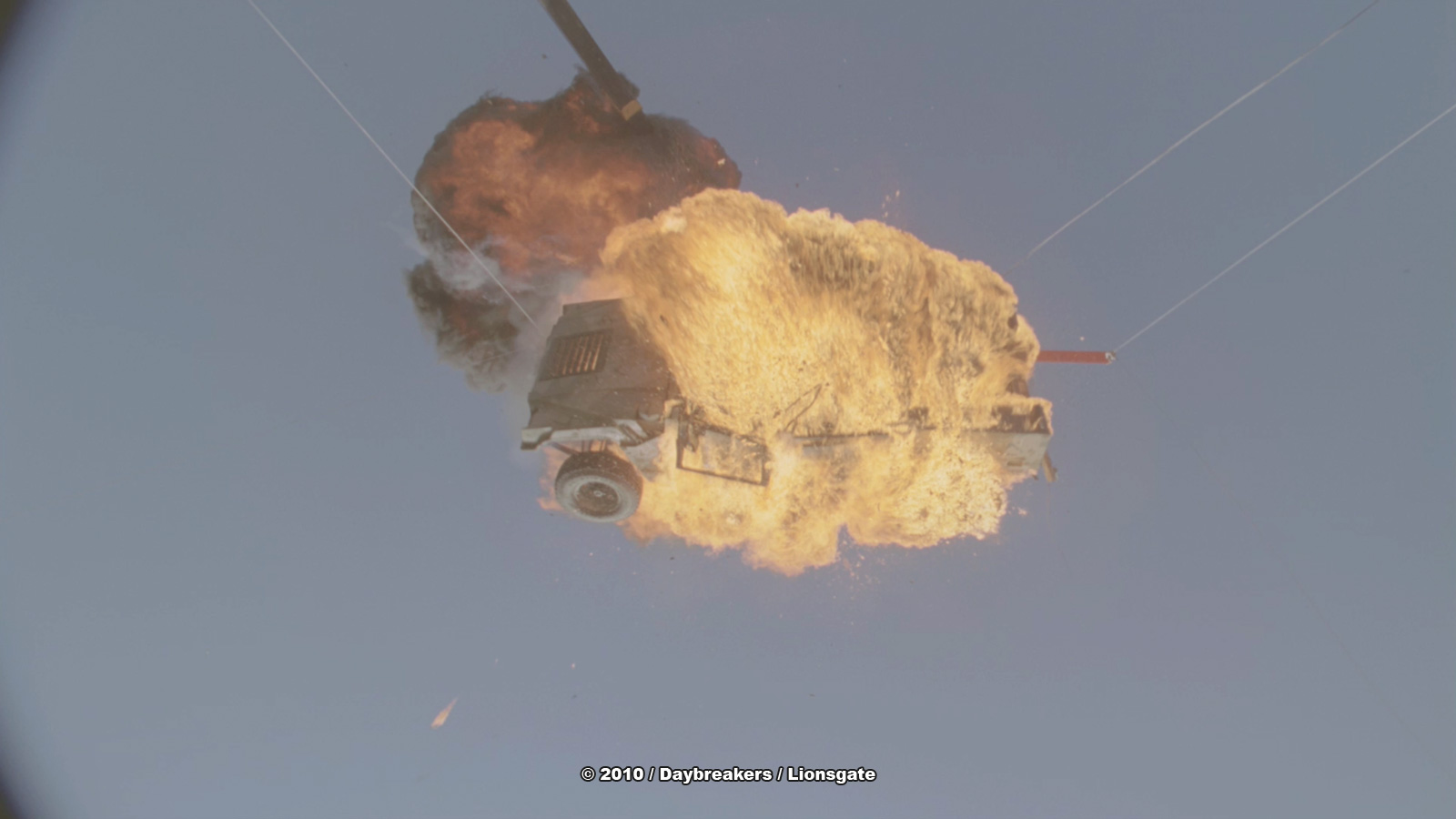 |
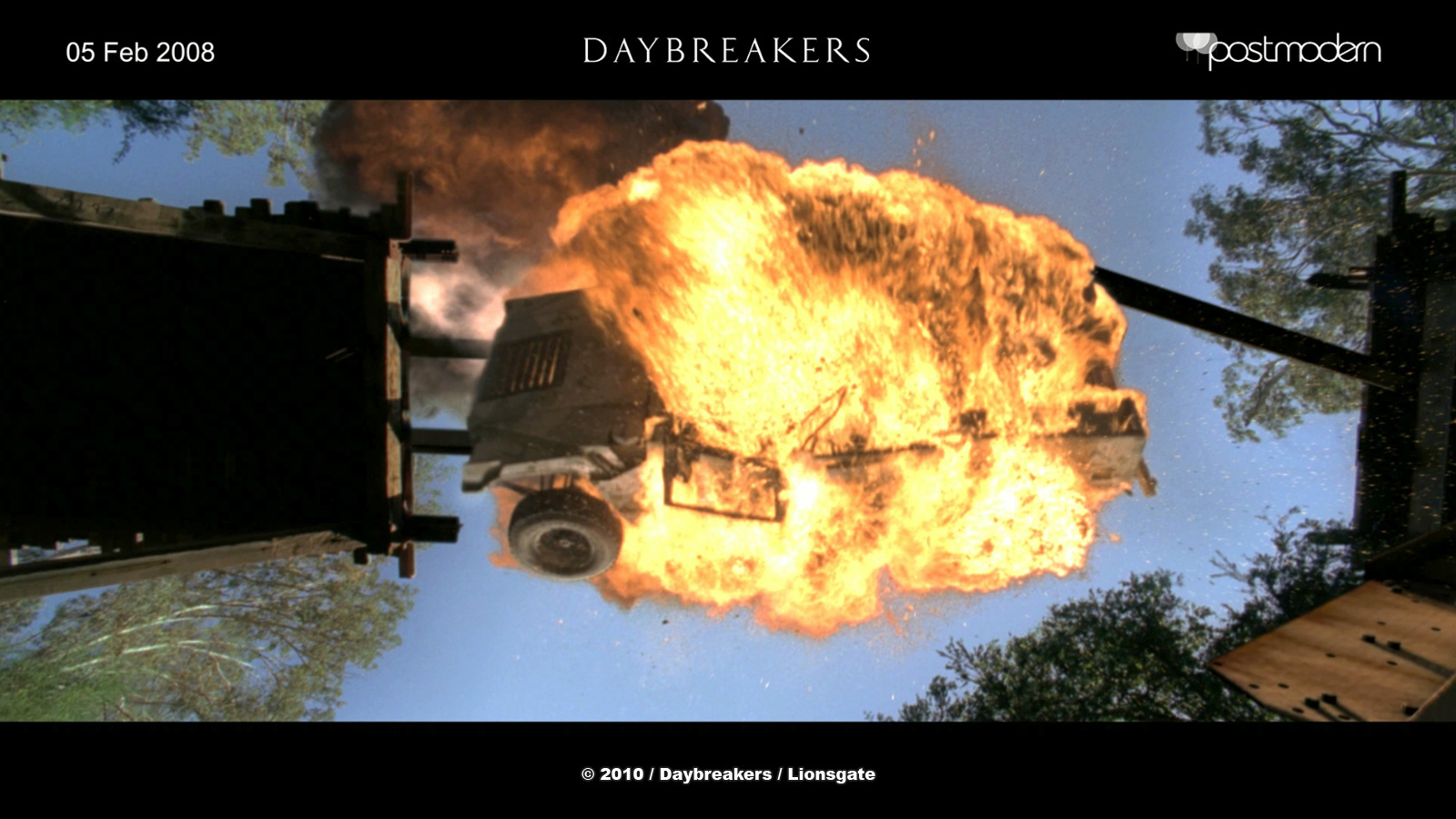 |
What are your software pipeline?
3D was mainly Maya. For compositing we used Shake and Flame. The film was shot on Panavision Genesis, and we worked mainly in PanaLog. The high-speed material was shot on film. It was nice to have a combination of high-speed and node-based composting, because it meant we could push stuff around between machines and use the best tool for the job. There was no point punishing someone to get something done in Shake what could be done in Flame much faster. Likewise, there was no point going the other way as well. I was very pleased with how smoothly our pipeline ran on this show, even though we faced a pretty short schedule to finish. It helped us hone a lot of our own tools, but was also quite a nimble way to do things. We applied the same pipeline to KNOWING (like DAYBREAKERS, was shot on digital), and found that we could really pump out stuff and give ourselves time to experiment and try and add something more. I think that is a really important aspect of a good pipeline… it has to give you options, and the time and ability to be creative.
What did you keep from this experience?
How nice it was to work with directors like these. There was a sense of collaboration and a freedom to experiment that you don’t often get.
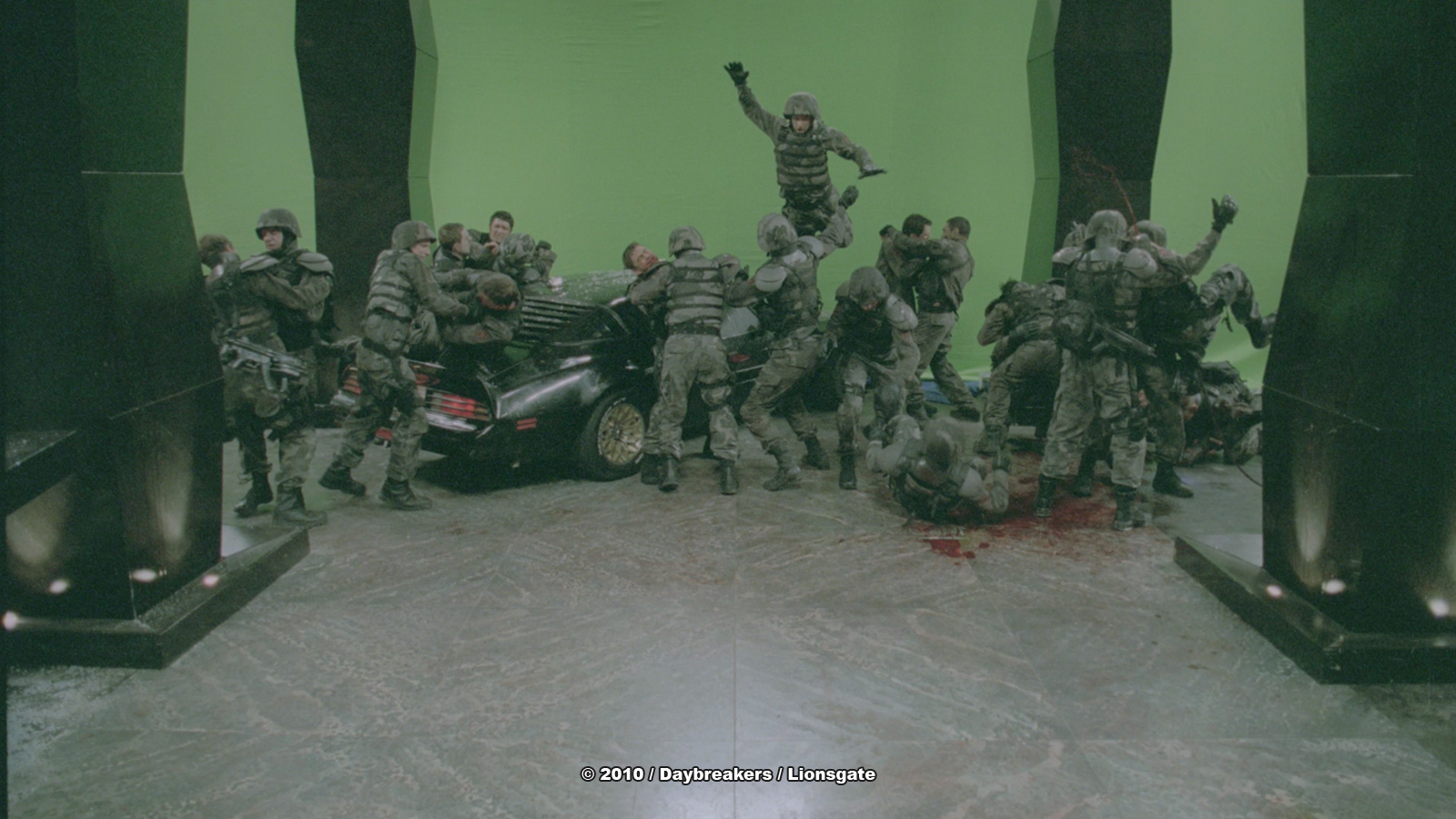 |
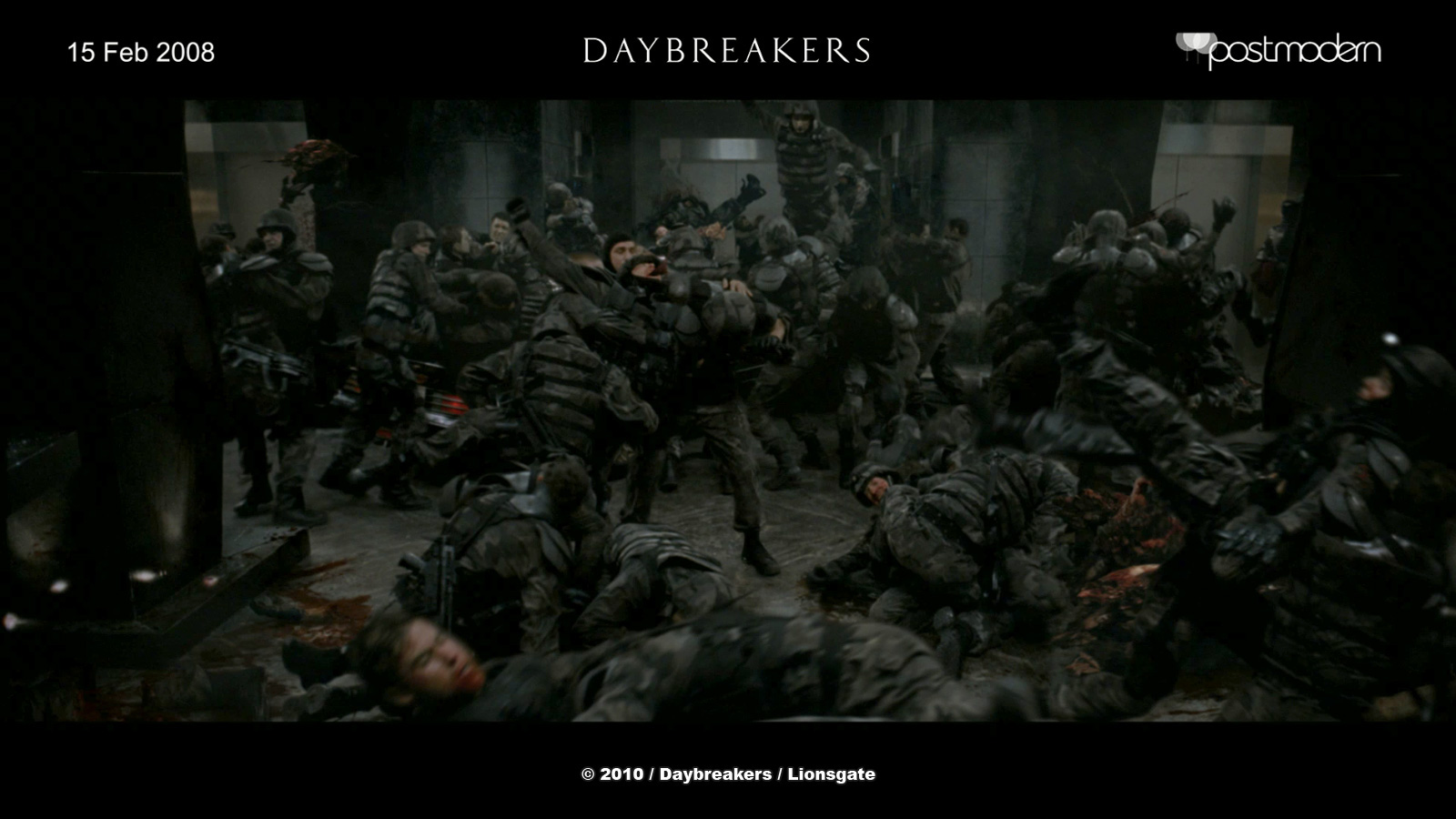 |
What is your next project?
We actually finished Daybreaks a long time ago – in 2008. Since then we did Australia, and Knowing, and quite a few commercials. We have other projects coming up, but as usual, I am sworn to secrecy for now!
What are the 4 movies that gave you the passion for cinema?
I have to admit to the first STAR WARS which was one of those childhood touchstone experiences; but my other inspirations are maybe more eclectic: THE UNBELIEVABLE TRUTH by Hal Hartley; THE COOK, THE THIEF, HIS WIFE & HER LOVER; and 2001. I could watch them all many times over, but perhaps STAR WARS is just a chance to relive a moment from my childhood.
© Vincent Frei – The Art of VFX – 2010





Of course James is being figurative when talking of pig bits, no actual offal was used for the visual effects or indeed anywhere else in the movie. All “blood and guts” of course being provided by the Special Effects and Special Makeup Effects departments.